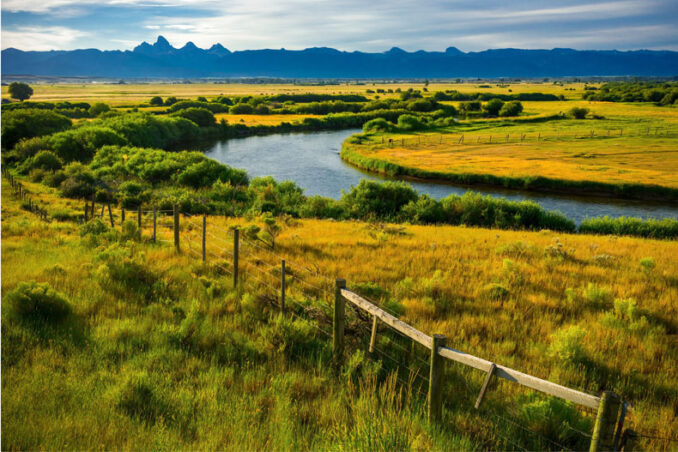
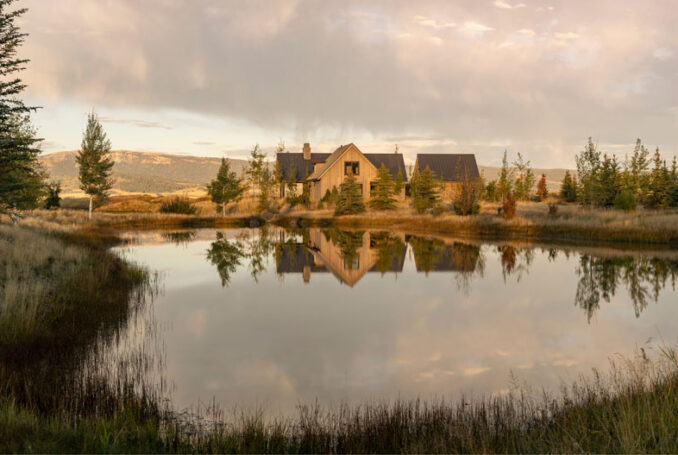
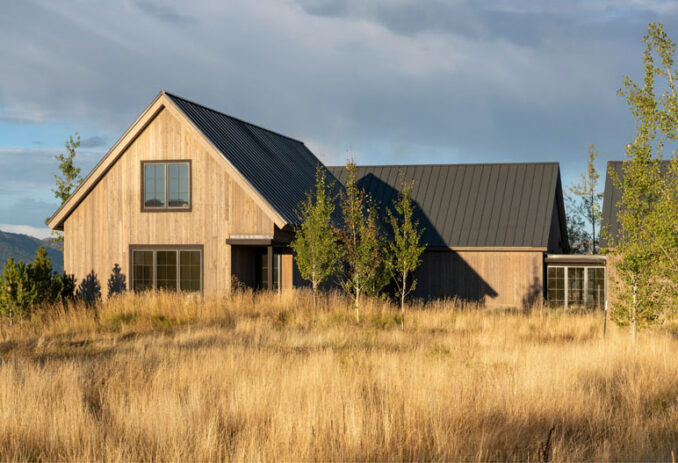
Rare flora and a rich diversity of migratory bird species distinguish the Teton River Basin as a private land conservation priority in the 26 million-acre Greater Yellowstone Ecosystem. Among the Basin’s most important and threatened ecological features is Woods Creek Fen – a 4,000-acre peat-forming complex fed by groundwater originating within the nearby Teton Range. In the early 2000s, a large-lot subdivision was approved on the edge of this ecological phenomenon, but its trajectory was temporarily halted in 2008 due to the economic crash. Under new ownership, the half-finished development was resurrected in 2017. Our clients – a multi-generational family – purchased a 1.2-acre lot at the end of a cul-de-sac.
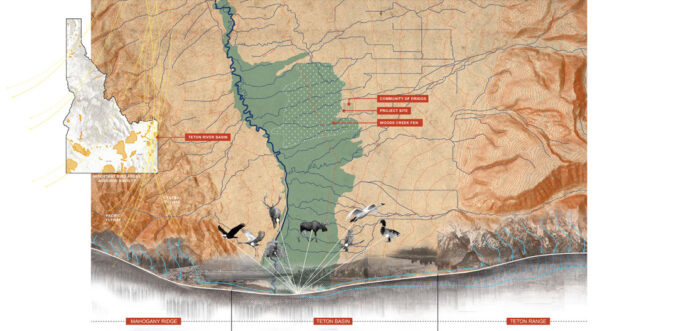
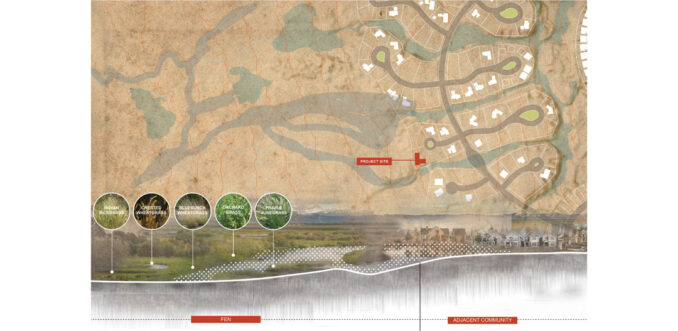
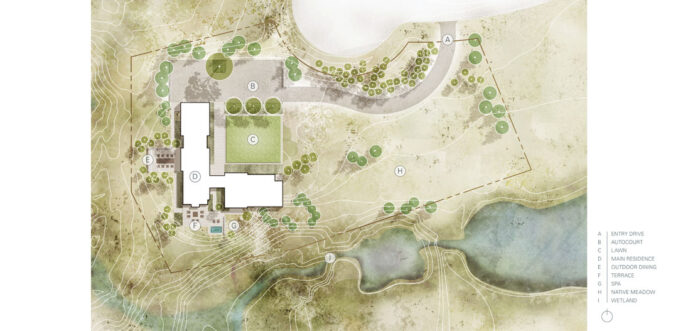
Initial conversations with the family revealed widely differing perceptions of landscape design. The landscape architect – inspired by author Wallace Stegner’s focus on the scarcity of rainfall in “Beyond the Hundredth Meridian” – promoted awareness and education of relevant sustainability topics to ensure an understanding of aridity in the West. Allied with redefined conservation values, these principles helped form an unwavering commitment to responsible living.
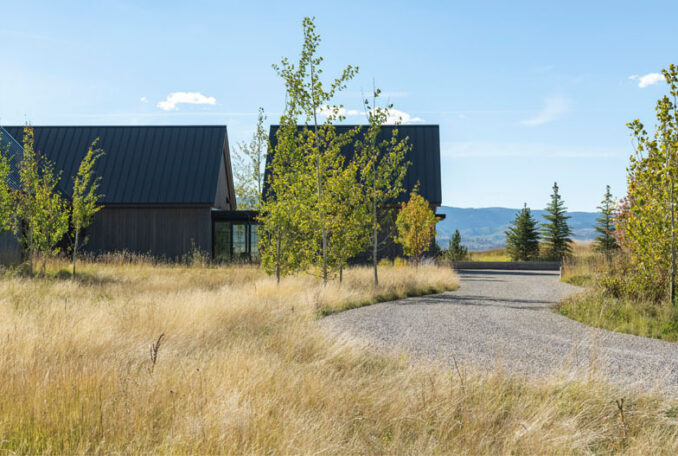
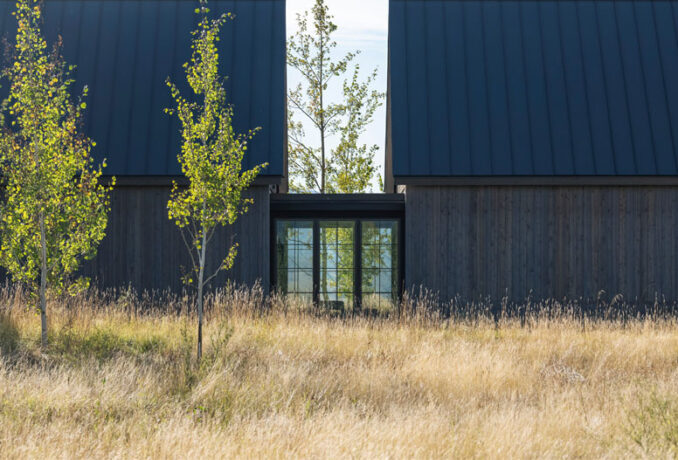
While a neighborhood-scale framework of constructed wetlands had been initially implemented, individual lots remained perched over the existing landscape with little connection to adjacent natural systems. With a vision for a seamless transition between disturbed and preserved lands, the team proposed an atypical approach where macro-scale restoration strategies addressing landform, hydrology, soil, and ecology preceded design decisions, informing a symbiotic result between architecture and land. Emerging from its riparian setting, the home invites the landscape to permeate interior spaces while outdoor interventions remain disciplined.
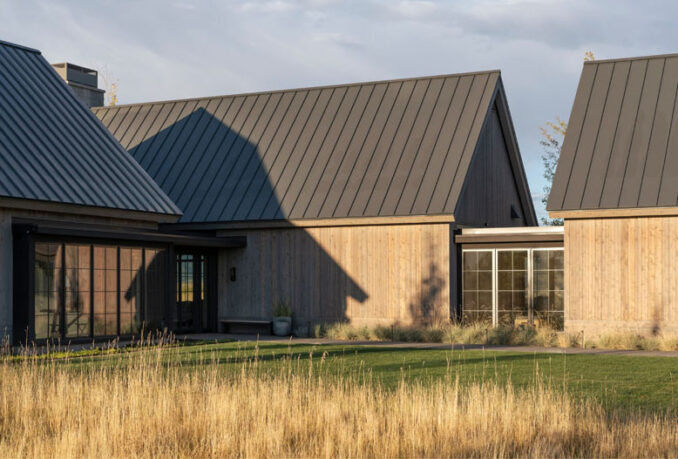
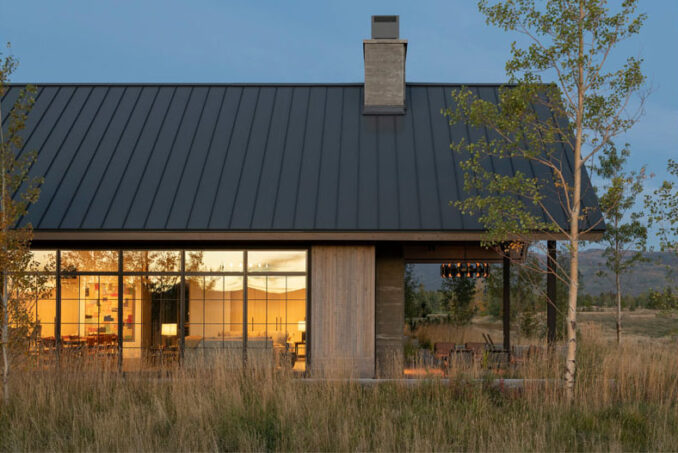
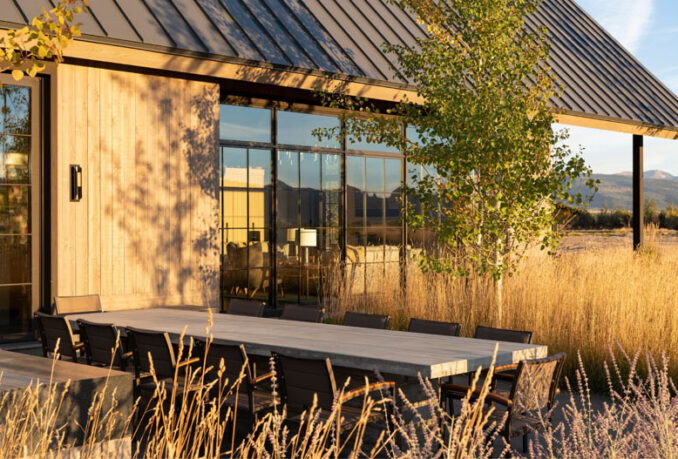
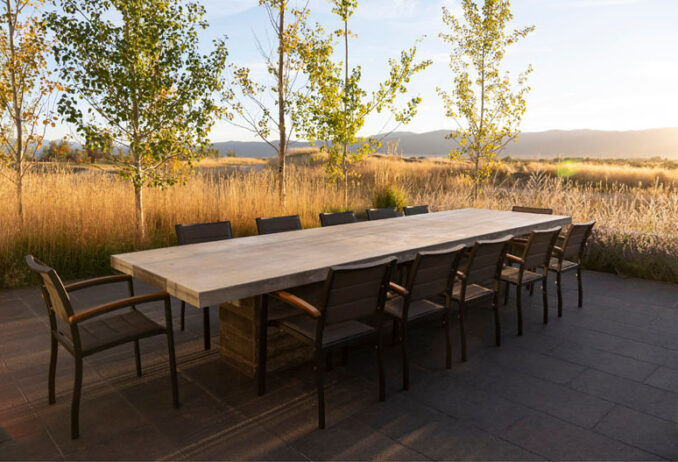
Challenging the notion of the traditional American subdivision, this 1.2-acre Eastern Idaho garden reflects a landscape of minimal impact and purposeful stewardship. Although the neighborhood plan acknowledged its proximity to sensitive lands, its guidelines proposed conventional suburban aesthetics incongruous with the rural setting, including a requirement for planting “bluegrass sod across the front yard, along the entire front property line, in the side, and rear yards to create continuity.” In response, the team opted to create a progressive, sustainable case study that advances resiliency and stewardship in a region facing shifting climate conditions:
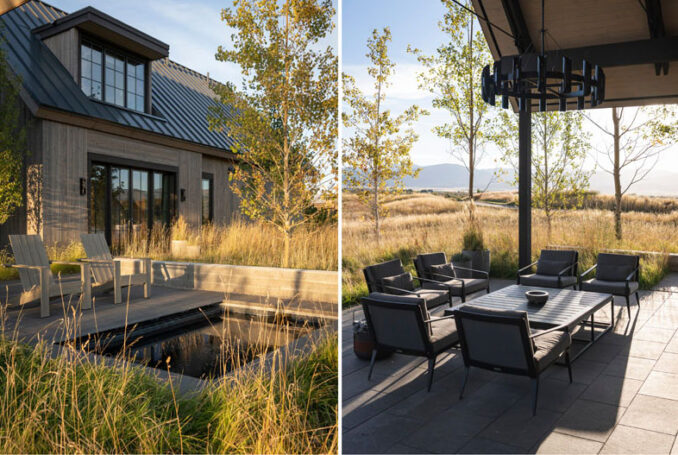
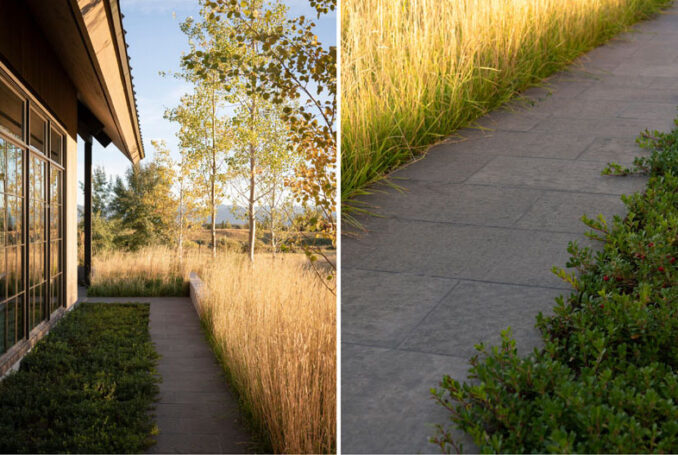
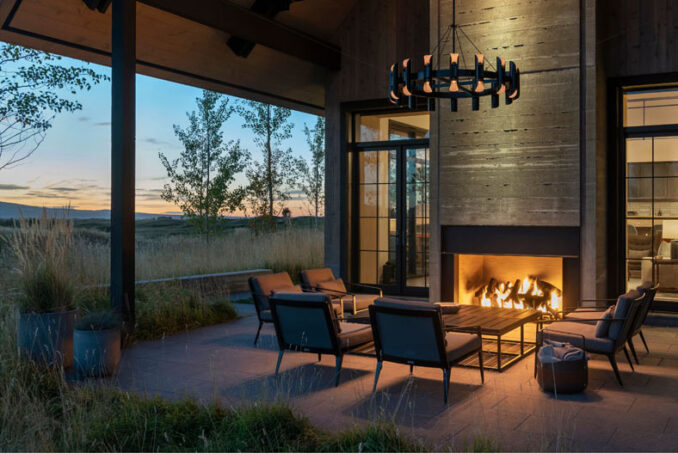
Biodiversity: Establishes priority conservation bird habitat with a drought-tolerant meadow covering 90% of the property. Water: Requires irrigation only for establishment; Bolsters streamflow and restores fish habitat; Reestablishes drainageways to filter onsite runoff before joining the fen. Scenic: Prioritizes dark sky, uninhibited wildlife movement and landscape continuity; Restores land adjoining communal spaces with native plantings; Exceeds planting guidelines by twice the requirement.
Tributary boldly redefines design guidelines, addressing sustainability measures of water consumption, stormwater management and groundwater recharge, wetland preservation, dark sky protection, migration patterns, and visual continuity. Protecting, restoring, and stewarding Western rural lands is critical to this vast region’s natural and economic future. In communities where residents prioritize individual expression over long-term conservation best practice strategies, landscape architects can lead by example by developing an educational framework that juxtaposes human impacts of development and the interconnected relationships and processes that link site-specific and regional natural resources.
Tributary House
Landscape Architect: Design Workshop, Inc.
Design Workshop Team
Principal – Mike Albert, FASLA, AICP, LEED AP Project Manager – Ashley Hejtmanek, ASLA (Schematic Design) Ben Roush, ASLA (Design Development-Construction Observation) Designers – Kurt Culbertson, Brian Corrie, Faezeh Ashtiani, Isabella Welch, Xiaojian Fan Others – Mary Oliver, Feras Abdullah, Ziwei Shen, Brandon Huttenlocher, Leah Stoltz, Sarah Chase Shaw
Collaborators
Architecture: Robbins Architecture
Water Feature Engineer: Water Design, Inc.
Structural Engineer KL&A Structural Engineering
Civil Engineer/Geotechnical Engineer: Jorgensen Engineering
General Contractor: Wilkinson and Montesano
Landscape Contractor: Bluebird Landscape
Images: Design Workshop unless otherwise captioned
